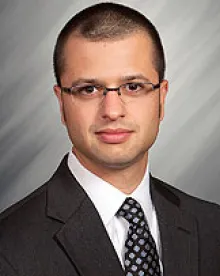The Supreme Court is considering at least four cases that could have profound implications for the future of class actions. The cases the Court will consider address: (1) a corporate defendant’s ability to remove a class action suit to federal court under the Class Action Fairness Act; (2) evidentiary burdens plaintiffs must meet at the class certification stage; (3) a defendant’s ability to moot a class action by paying the named plaintiff’s claim before the class can be certified; and (4) the ability to waive class action status in arbitrations under the Federal Arbitration Act.
First, in Standard Fire Insurance Co. v. Knowles, the Court will decide whether a corporate defendant can be forced to litigate in state court if the class’ representative offers to stipulate to damages of less than $5 million, which is the current jurisdictional threshold for removal under the Class Action Fairness Act. If the plaintiff prevails, the decision could significantly impair defendants’ ability to remove class cases to federal courts and undermine the purposes of the Class Action Fairness Act. As the Chamber of Commerce explained in its amicus brief, state courts often do not subject proposed classes to the “meaningful scrutiny” that the federal rules require, and “employ procedural devices that can encourage nuisance litigation and force defendants to settle meritless claims.” Also, unlike the federal courts, state courts have no ability to consolidate multiple class actions against the same defendant. As such, businesses can be forced to “shoulder the burden of simultaneously defending against a litany of overlapping class actions in state courts throughout the country.” The Knowles case is currently set for argument in January.
Second, in Comcast v. Behrend, the Court will revisit the question of how rigorous the district courts must review the evidence on the merits to determine whether to certify a class action. Just last term, the Court addressed a similar issue in Wal-Mart v. Dukes, which it described as one of the largest class actions ever certified. The Comcast class is even larger. The parties in the case dispute the rigor with which the district court should have reviewed an expert report on the scope of damages allegedly suffered by the thousands of alleged class members. After argument was heard on November 5, 2012, the Court appeared concerned about deciding an issue left untouched by Dukes – whether expert witness testimony on damages must meet the rigorous standards the Supreme Court previously set forth in Daubert v. Merrell Dow Pharmaceuticals. If the Court does not apply the Daubert standard, it could expose defendants to the dangers of class litigation without any true examination of whether a remedy could be awarded on a classwide basis.
Third, although not a class action case itself, Genesis HealthCare Corp. v. Symczyk has substantial implications on a defendant corporation’s ability to moot a potential class action before it starts. Here, the Court will decide whether a case becomes moot (and thus beyond the judiciaries’ Article III power), when the plaintiff receives an offer from the defendant to satisfy all of the plaintiff’s claims. Many times, it makes fiscal sense for a defendant to pay the entirety of a named plaintiff’s claim rather than face the litigation expense and damage exposure that a full-blown class action presents. If cases do become moot through such an offer, many defendants will be able to cut off the costs and danger of class litigation by paying nominal damages upfront.
Fourth, the Court will re-visit the issue of waivers of class actions in arbitration clauses in American Express Co. v. Italian Colors Restaurant. The Court held in AT&T Mobility LLC v. Concepcion, 131 S. Ct. 1740 (2011) that such waivers were enforceable under the (“FAA”) even if a state statute prohibited them. In the American Express case, the Second Circuit refused to enforce an arbitration agreement that waived class arbitration despite the recent Concepcion decision. The Second Circuit’s reasoned that Concepcion was concerned only with preemption of state law and did not control the federal question of whether the FAA itself rendered those clauses unenforceable. The Second Circuit stated that it was not examining the preemption of a state law, but whether class action arbitration waivers were enforceable as a matter of federal law under the FAA. The Second Circuit went on to hold that such waivers could not be enforced under the FAA “if the plaintiffs are able to demonstrate that the practical effect of enforcement would be to preclude their ability to vindicate their federal statutory rights.” By accepting the case, the Supreme Court has opted to wade into the question of what – if any – restrictions the FAA itself imposes on the waiver of the right to pursue a class action in an arbitration.
All four of these decisions could have a profound impact on the availability of class action litigation in a number of contexts. Decisions should be expected closer to the end of the Court’s term in June of 2013.




 />i
/>i

